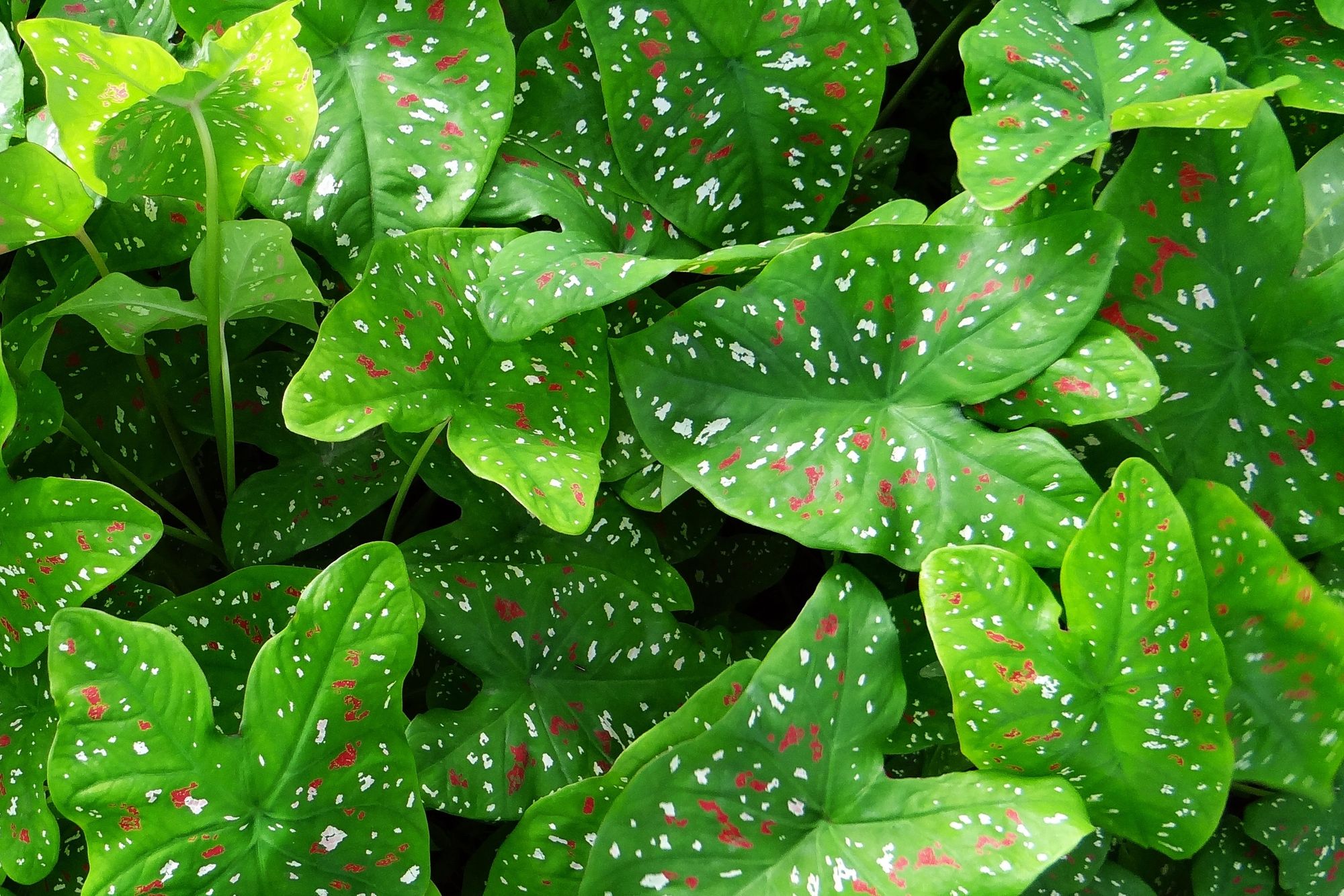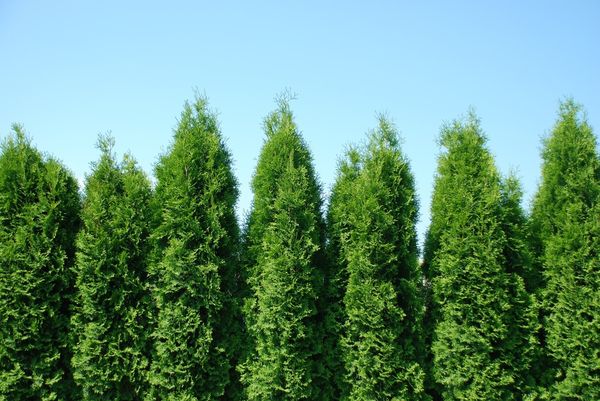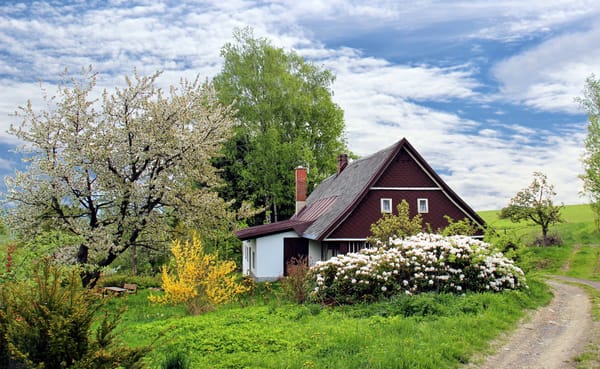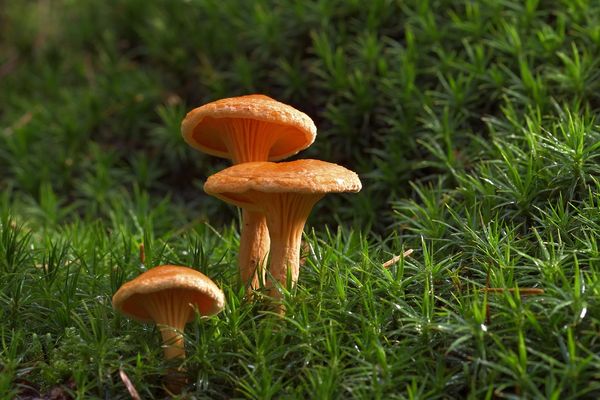Selecting an ornamental tree may cause choice paralysis if you love beautiful trees but need help deciding which is best for your home. Particularly considering the possibilities, including evergreens, blooming species, and trees with variably colored bark.
Heart-shaped leaf trees are a fantastic choice to improve the attractiveness of your garden and surroundings and make them stand out in your area.
Be at ease! You will learn precisely what a tree with heart-shaped leaves is in this article, along with seven of the prettiest species. For many years, these can bring color and natural beauty to your yard or garden.
How to Spot Heart-Shaped Leaved Trees
Most often, trees with heart-shaped leaves are categorized as belonging to the Tilia or Cercis genera.
Depending on the type, they may produce stunning blooms of various hues and can be identified by their flowers, size, and leaves.
The following discussion covers these characteristics, their optimal growing area, suitable weather, and growth circumstances.
What is a Heart-Shaped Leaf
A little unique, heart-shaped leaves—also referred to as cordiform or cordate-shaped—stand out from other oval-shaped leaves by having a larger base with a dip in the centre and a tapering tip.
These unusual characteristics may provide each tree's canopy a specific attractiveness seen nowhere else: proof of how special each tree is when they are present in bunches.
Trees with Heart-Shaped Leaves
Some of the most well-known types of trees in this category are those I've included below. Here, you may learn all you need to know about their salient characteristics, tolerance for shadow, growing regions, and preferred soil types.
1. Flame Thrower Redbud Tree
A newcomer to the horticultural industry, Cercis canadensis 'NC2016-2' is colorful and resembles a vine wrapped around a short tree trunk. It was first presented in 2020. It has gold, red, green, and orange leaves with heart-shaped patterns.
Tree Summary
Size of Tree: It takes around 10 years to reach its maximum height of twenty feet, but after only five years it starts to bloom, filling your landscape with magnificent blossoms.
Planting Zones: Zones 5 through 9 are ideal for growing this tree. Consequently, its northern boundary stretches from Seattle in the Northwest via Denver, Nebraska, and Iowa before continuing to Maine in the Northeast. (Winters here vary from -20 to -10 degrees Fahrenheit.) Georgia, Florida, and Texas, on the other hand, are part of its southern boundary. (This area has winter temperatures between 20°F and 30°F.)
Position: Flame thrower Redbud trees need 6 to 8 hours of sunshine daily. They can, however, withstand some light shade.
Soil: These trees grow best in acidic soil, but they can also grow in sand, loam, or clay.
Tree Appeal
Instead of having green leaves, this tree has vibrant, naturally occurring colors. It produces many lavender flowers in March and April, adding to its springtime attractiveness.
Tree Care
Choose a location with well-draining soil and lots of sun exposure for the best results. Twice weekly (or whenever the top 3 inches are dry): water. Even after the first year, you must keep checking for dryness.
The optimum times to prune are in the winter to remove broken limbs or in the summer when the tree is dormant.
2. Hearts of Gold Redbud Tree
Cercis canadensis 'Hearts of Gold,' or simply "Hearts of Gold," is a relatively newcomer to horticulture, having been uncovered for the first time in 2002 at a private property in Greensboro (North Carolina).
Tree Summary
Tree Size: The gold redbud tree's heart may grow to a maximum size after up to 20 years and a height of 20 to 25 feet. Its growth pace is regarded as moderate.
Planting Zones: Similar to the flame thrower redbud tree, it also does well in zones 5 through 9, when wintertime lows range from -20 to -10 degrees Fahrenheit to 20 to 30 degrees. It may thus be cultivated across the majority of the United States.
Position: The hearts of gold redbud need six hours of sunlight daily. However, it could benefit from even partial shade, especially during hot weather. Its trees will undergo a color shift due to summertime exposure to sunshine.
Type of Soil: The hearts of the gold redbud tree are tolerant of a broad range of soil types, even those for well-drained ground. As a result, it may be cultivated on sand, chalk, clay, or loam. It has remarkable adaptability and can even handle acidic or alkaline soils.
Tree Appeal
The tree is renowned for its rich foliage, which changes yearly from emerald to green gold to gold.
Although its beauty goes beyond the changing leaves, it also provides bursts of lavender color in the form of blooms in the early spring that may last up to three weeks.
Tree Care
The tree will need a 3-inch mulch coating after being transplanted. During the first year, it will also need watering twice weekly (or more often if the top 3 inches get dry).
3. Rising Sun Redbud Tree
This cultivar, Cercis Canadensis 'JN2' in botanical terms, was found in 2006 at Jackson Nursery in Belvidere, Tennessee.
It is regarded as the best Cercis genus member that can withstand heat and drought. The Love Tree and Judas Tree are other names for it.
Tree Summary
Tree Size: The tree has a maximum height of 12 feet and a maximum spread of 8 feet.
Planting Zones: Similar to the flame thrower redbud tree, it also does well in zones 5 through 9, when wintertime lows range from -20 to -10 degrees Fahrenheit to 20 to 30 degrees.
Position: The redbud of the rising sun is tolerant of shadow. However, they must be positioned where they will always have access to direct sunshine if they are to blossom ultimately.
Type of Soil: The rising sun redbud prefers acidic to alkaline soils with a pH range of 6.5 to 8. This tree's exceptional degree of flexibility allows it to thrive in almost any soil, even ones that are a little dry. Nevertheless, it won't grow well on sod saturated with water or standing water.
Tree Appeal
Its foliage varies from orange to yellow to green throughout the year.
One of the most significant trees for your front yard, its brilliant purple blossoms emerge between early and mid-spring before its leaves, providing eye-catching appeal throughout spring and summer.
Tree Care
One thorough monthly watering is necessary for the rising sun redbud, particularly during dry spells. A balanced, slow-release fertilizer should be applied, and spring is the ideal time to use it on trees. Only broken or crossed branches should be removed from the tree, which needs relatively little trimming.
4. Quaking Aspen Tree
The quaking aspen, also known as Populus tremuloides, is known as the golden, mountain, white, and other names.
It is recognizable by its distinctive light bark with black patterns and its leaves, which change to a golden-yellow color in the fall.
Tree Summary
Tree Size: Quaking aspen trees may reach a height of 60 feet. It's possible that some of them can survive for over a century. They have a life expectancy of sixty years.
Planting Zones: The quaking aspen may grow in hardiness zones 1 through 6. It may thus be cultivated in areas with winter lows of -10 °F to 0 °F and those with winter highs of -60 °F to -50 °F.
Position: The quaking aspen may reproduce rapidly, but it has a very low tolerance for shadow and can only survive in full sunshine. It will thus need at least 4 hours of sun each day.
Soil Type: This tree loves well-drained, wet soils. It can grow in loam and clay soils and does best in environments with a pH range of 5.5 to 8.0.
Tree Appeal
The tree is a perennial favorite of horticulturists because of its attractive golden leaves and delicate catkins. It may also be identified by the way its leaves move in a gentle wind.
Tree Care
Plant your quaking aspen in rich soil, and give it a spring fertilizer feeding using a balanced fertilizer for best results. Since the tree will be dormant throughout the winter, pruning should be done then.
5. Southern Catalpa
This tree, often known as the cigar or smoking bean tree, is officially recognized as Catalpa bignonioides. It is renowned for its veiny leaves, scaly bark, and sometimes knotty trunk.
Tree Summary
Tree Size: The tree may reach a respectable height of 60 feet. It has a spread of up to 50 feet and a lifespan of up to 70 years.
Planting Zones: Southern catalpas flourish in zones 5 to 9. Idaho, Iowa, Pennsylvania, and New York comprise this region's northernmost boundary. Wintertime lows in these states—Utah, New Mexico, Nevada, Texas, Alabama, and Georgia—range from 20 to 30 degrees Fahrenheit.
Position: The tree enjoys full sunlight and can survive hot temperatures. On the other hand, it may also manage light shade.
Soil Type: Southern Catalpa trees grow best in rich, acidic soils and have good drainage. They can tolerate pH levels between 5.5 and 6.
Tree Appeal
The tree is well-known for its leaves, which release an awful stench when crushed, and its blooms, which occur briefly between May and July.
It is regarded as an environmental annoyance because of its persistence and capacity to drop its leaves and blooms in massive numbers. Bees, on the other hand, adore it.
Tree Care
Seedlings should be raised in the shade before planting outside in the spring in sunny or somewhat shaded places.
When watering a young plant, keeping an eye on the soil to ensure it doesn't become too wet is essential.
5. Foxglove Tree
The Paulownia tomentosa, which is native to central China, is often referred to as the princess tree or the empress tree. It is noted for increasing and has broad, wrinkled leaves. However, since it can grow relatively fast, it is considered an invasive species that may swiftly take over places where it is planted.
Tree Summary
Tree Size: Foxglove trees can grow as high as 80 feet and as wide as 30 feet. They may grow up to 20 feet tall in a year and achieve maturity by their 10th year due to their extraordinary growth.
Planting Zones: This tree thrives in hardiness ranges 6 through 9. Winter temperatures range from -10°F to 0°F in this climatic band's northern border, extending through Oregon, Utah, New Mexico, and the States of Oklahoma, Arkansas, and Tennessee. Conversely, the southern boundary encompasses Utah, New Mexico, Nevada, Texas, Alabama, and Georgia, with 20 to 30 degrees Fahrenheit wintertime lows.
Position: Empress trees can withstand light shading. However, they can't survive without at least six hours of sunshine every day.
Soil Type: Foxglove trees can grow in a variety of soils. They may flourish on soils with pH levels ranging from 5 to 8.5 that are acidic, neutral, or alkaline. Additionally, they may grow on clay or sand. Southern catalpa trees demand rich, acidic soils with good drainage. They can tolerate pH levels between 5.5 and 6.
Tree Appeal
Foxglove trees' bark gives the impression that their trunks are encircled with silver rings. Their lovely purple blossoms have a perfume that is reminiscent of vanilla.
Tree Care
Empress trees are very robust and don't need to be fed. They have exceedingly strong roots. They are thus perfect if you enjoy decorative trees that require little upkeep.
It may produce millions of seeds every year. As a consequence, it has been outlawed in several jurisdictions, including Connecticut, where it is regarded as an invasive species.
6. American Lime
Despite having a slightly deceptive name, this tree is also known as Tilia americana, Carolina basswood, American linden, or American basswood. It belongs to the mallow family rather than the citrus family.
It has another moniker, "bee tree," since bees love it so much, and it can grow to impressive heights.
The American linden is often grown for shade and produces tiny, fragrant yellow flowers in the summer.
Tree Summary
Tree Size: This tree has the potential to increase and has been reported to reach heights of around 130 feet. It might reach a height of up to 120 feet, but the likelihood of it having a spread of 50 feet is far higher. It has a lengthy longevity, with a maximum lifespan of 200 years.
Planting Zones: This tree thrives in hardiness ranges from 2 to 8. In Wyoming and Alaska, where this climatic band's northernmost point is located, winter temperatures range from -50°F to -40°F. Conversely, the southern boundary extends into Texas, Arkansas, Alabama, Georgia, and southern New York, with wintertime lows of 10 to 20 degrees Fahrenheit.
Position: An American Linden tree requires six hours of sunshine each day. They could, however, be able to manage with less. They also have a fair amount of shade tolerance.
Soil Type: This tree favors neutral to alkaline soils. Nevertheless, it may thrive in a pH range of 4.5 to 7.5.
Tree Appeal
The size and gorgeous canopy of American limes may be rather striking. Because of their strong fragrance and copious amounts of nectar, they provide their small blooms, which bloom between May and July and are also a favorite with pollinators. They yield seeds that attract birds and squirrels that depend on them for sustenance.
Tree Care
They tolerate arid circumstances but prefer damp, nutrient-rich soil—plant in broad sun to moderate shade and mulch yearly to prevent nitrogen deficits.
6. Silver Lime
The Tilia tomentosa, or silver linden as commonly called, may reach heights of 115 feet and is renowned for its petite, very scented blooms that provide enormous amounts of nectar.
Tree Summary
Size: Silver limes may grow as tall as 70 feet and as wide as 50 feet. However, some may grow to 115 feet tall and reach even higher heights.
Planting Zones: This tree thrives in hardiness ranges 4 through 7. Winter temperatures range from -30°F to -20°F throughout this climatic band's northern border, which stretches from New England to portions of the north of Idaho and New York. Conversely, the southern boundary extends from Texas to south New York, with wintertime lows of 0° to 10°F.
Position: Silver lindens need 6 to 8 hours of direct sunshine daily. They may, however, thrive in partial shade because of their moderate shade tolerance.
Soil Type: Like many other species in the same genus, the silver lime likes loamy, well-drained soil. It is tolerant of acidic, neutral, and alkaline soils, growing in a pH range of 6 to 8.
Tree Appeal
The leaves of silver lindens have a broad, regal canopy, have a pale underside, and may be particularly beautiful when they rustle in a bit of wind. They are renowned for their little clusters of light yellow blooms that bloom in June and July.
Tree Care
Silver lindens are very resistant to dryness; once established, they only need irrigation during droughts that extend for more than four weeks.
They respond well to pruning in the autumn or winter when they are dormant. If you need to feed them, you should use a balanced, slow-release fertilizer and apply it in the autumn or spring before new growth starts to show.
7. Typical Lime
The common linden, called Tilia x europaea, is distinguished by its lobed leaves, hermaphrodite blooms, and rough, light-gray bark. It is a hybrid of the big and small-leaved limes.
Tree Summary
Size: The tree, which has a very long lifespan of up to 400 years, may reach 160 feet.
Planting Zones: Between zones 3 and 9, a climatic range with Idaho, Wisconsin, Maine, and New York as its northern border, the familiar lime flourishes. In the winter, the area experiences temperatures between -40 °F and -30 °F. Georgia, Florida, and Texas make up its southernmost points. (This area has winter temperatures between 20°F and 30°F.)
Position: Common linden trees need up to six hours each day of direct sunshine. However, they can only handle shadows to a limited extent.
Soil Type: This tree does best in sandy, well-drained soil. It has a wide range of soil pH tolerance, growing well in conditions ranging from acidic to neutral to alkaline.
Tree Appeal
The tree blooms produce clusters of tiny, fragrant flowers with a cream hue throughout the summer. These male and female blossoms are a favorite of hummingbirds, butterflies, and bees.
Tree Care
For the first three months after planting, newly planted trees must be watered once or twice a week; if it rains, you can miss a watering session. To keep the soil wet but not soggy, care will need to be taken.
No fertilization should be applied during the first two years of the tree's existence. After this time, you must feed it throughout the autumn to prepare it for winter's rigors.
Conclusion
Deciduous Tree Prefers Soils
Some of the most lovely trees to adorn your landscape are those with leaves in the form of hearts. They undoubtedly provide a distinct charm to their surroundings with their leaves, which are often flaming, golden, or even silver, and their highly fragrant blossoms.
Heart-shaped leaves trees are an integral part of our ecosystem, offering not only beauty but also essential ecological services. The deciduous trees like the gold redbud tree botanical, eastern redbud, and the quaking aspen tree botanical, are renowned for their bright yellow fall foliage that replaces their dark green summer canopy. Each tree prefers soil that caters to its unique growth requirements, allowing it to thrive and prosper.
The northern catalpa, also known as the Indian bean tree or cigar tree, is another beautiful tree adorned with heart-shaped leaves. Its robust and honey-scented yellowish flowers provide a stunning contrast to the surrounding greenery, making it one of the most sought-after ornamental trees. On the other hand, the handkerchief tree or dove tree is characterized by its pale yellow flowers that add to its charm.
Yet, not all trees with heart-shaped leaves are deciduous. There are evergreen tree varieties as well that maintain their lush green throughout the year. Whichever type you prefer, trees with heart-shaped leaves provide an aesthetically pleasing addition to any landscape, marking a significant feature of botanical beauty. Their striking appeal, from the dark green summer foliage of the eastern redbud to the bright yellow fall leaves of the quaking aspen, validates their importance in landscape design. So whether it's the gold redbud tree botanical or the northern catalpa, these trees guarantee a unique and beautiful display.






